For 220 years now, the Hungarian National Museum (HNM) has been accepting objects, science, innovative ideas, visitors, and the culture of the nation itself - emphasised the State Secretary for Culture of the Ministry of Culture and Innovation in the opening speech of the scientific conference organised on Thursday on the occasion of the 220th anniversary of the establishment of the institution.
Péter Hoppál reminded the public: the museum's founder, Count Ferenc Széchényi, was an outstanding public figure of his time, a generous patron of science and culture, and a defining figure of an era already touched by reform ideas. His real greatness lay in the fact that he did not remain at the level of grandiose plans, but took action, he emphasised.
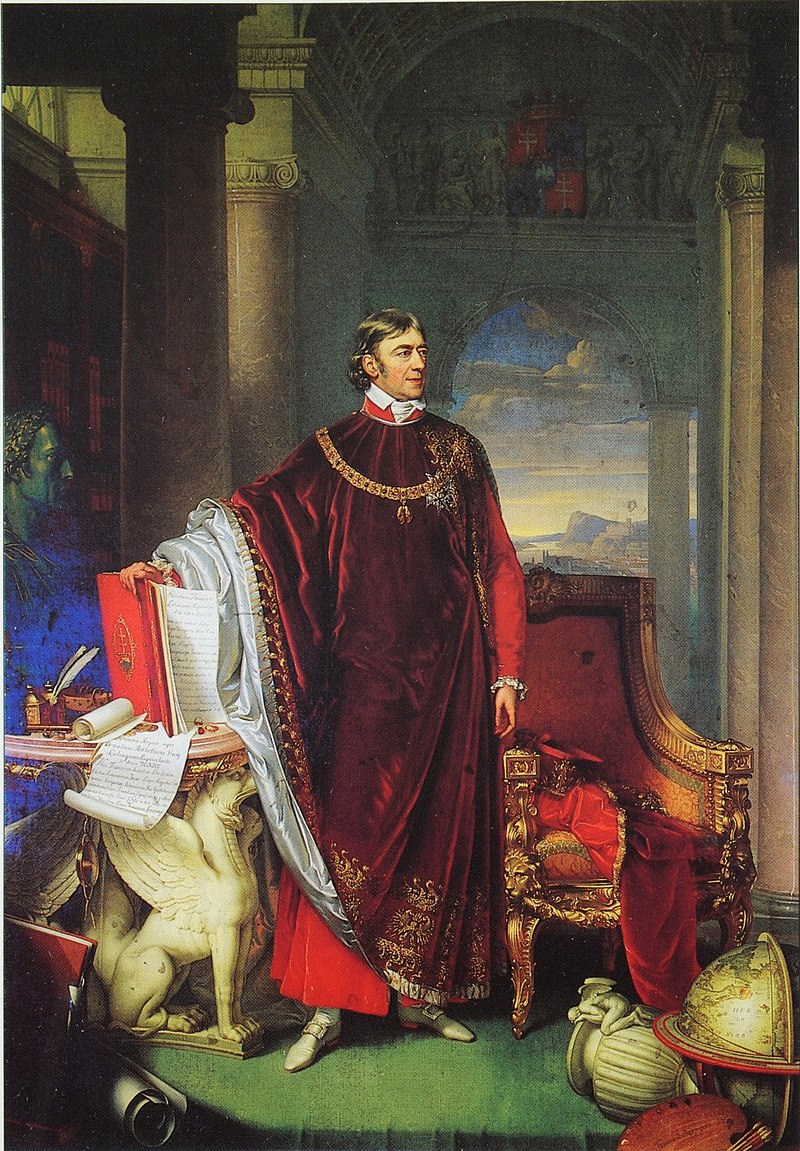
Portrait of Count Ferenc Széchényi, work of Johann Nepomuk Ender from 1823 (Source: Wikipedia)
As the founder of the Hungarian National Museum and the National Széchenyi Library, he prepared his collection for the benefit of the public with a definite concept - recalled the State Secretary, adding: István Széchenyi, the greatest Hungarian, could hardly have become a historical giant if he had not seen the example of his parents before him.
Péter Hoppál emphasised: the task assigned by the Széchényis is still timelessly accurate today. From time to time, new generations of reformers are needed, who do not hesitate to recognise and learn about the values of our national past, are proud of their Hungarianness and traditions, have an indefatigable patriotism while seeing their mistakes, and are ready to build a common future with self-confidence, he pointed out.

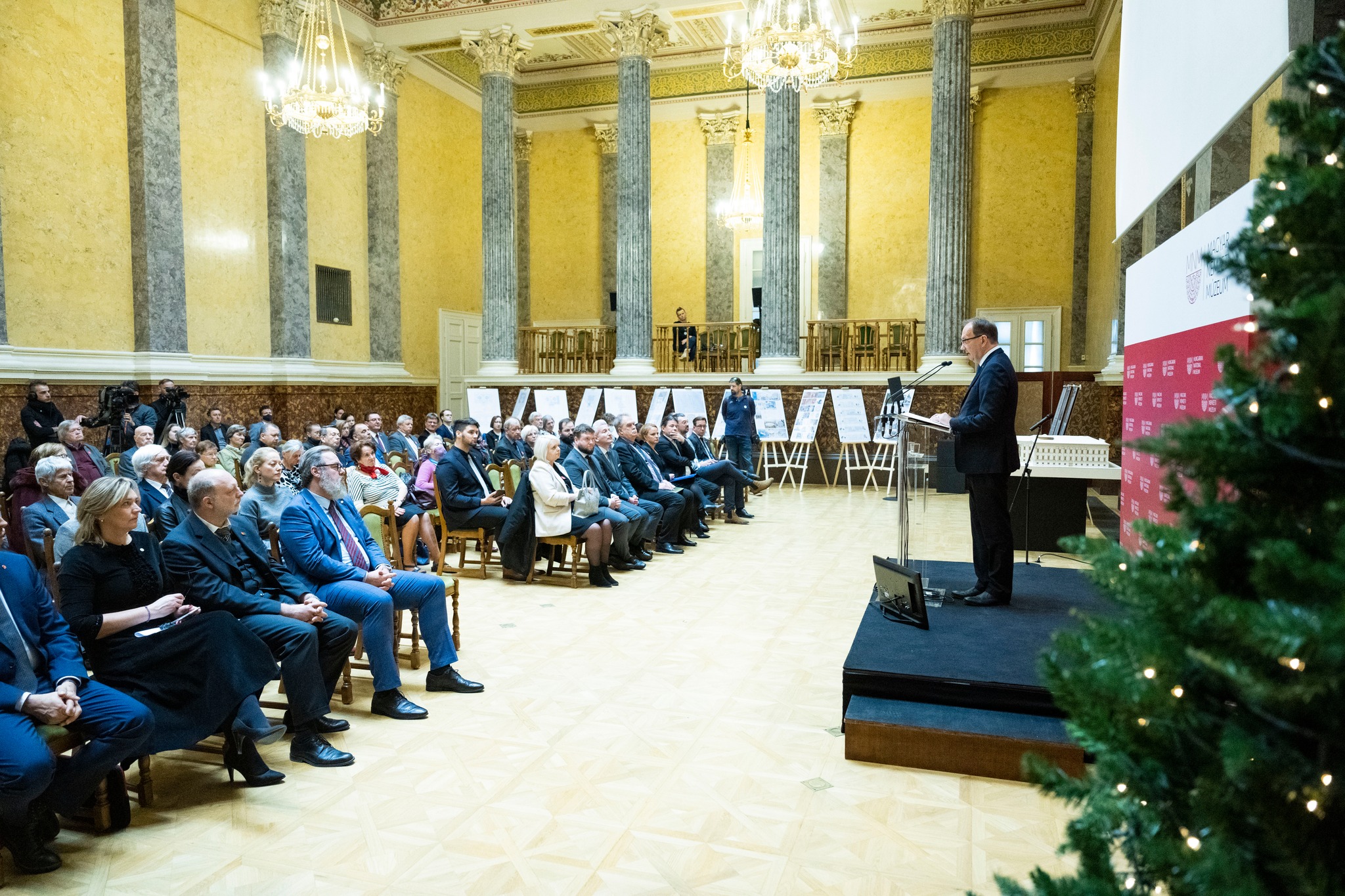
Opening speech of Péter Hoppál, State Secretary for Culture at the Ministry of Culture and Innovation, at the conference (Photo: Magyar National Museum)
As he said, the world and Europe are struggling with a deep and serious crisis of values, the relativisation of values believed to be unshakable has accelerated, the drift of daily problems carries with it the danger of putting intellectual life in quotation marks.
This is also why broad-based scientific approaches similar to today's are particularly desirable, which make us aware that we have a past, we have strong, deep spiritual roots, said Péter Hoppál.
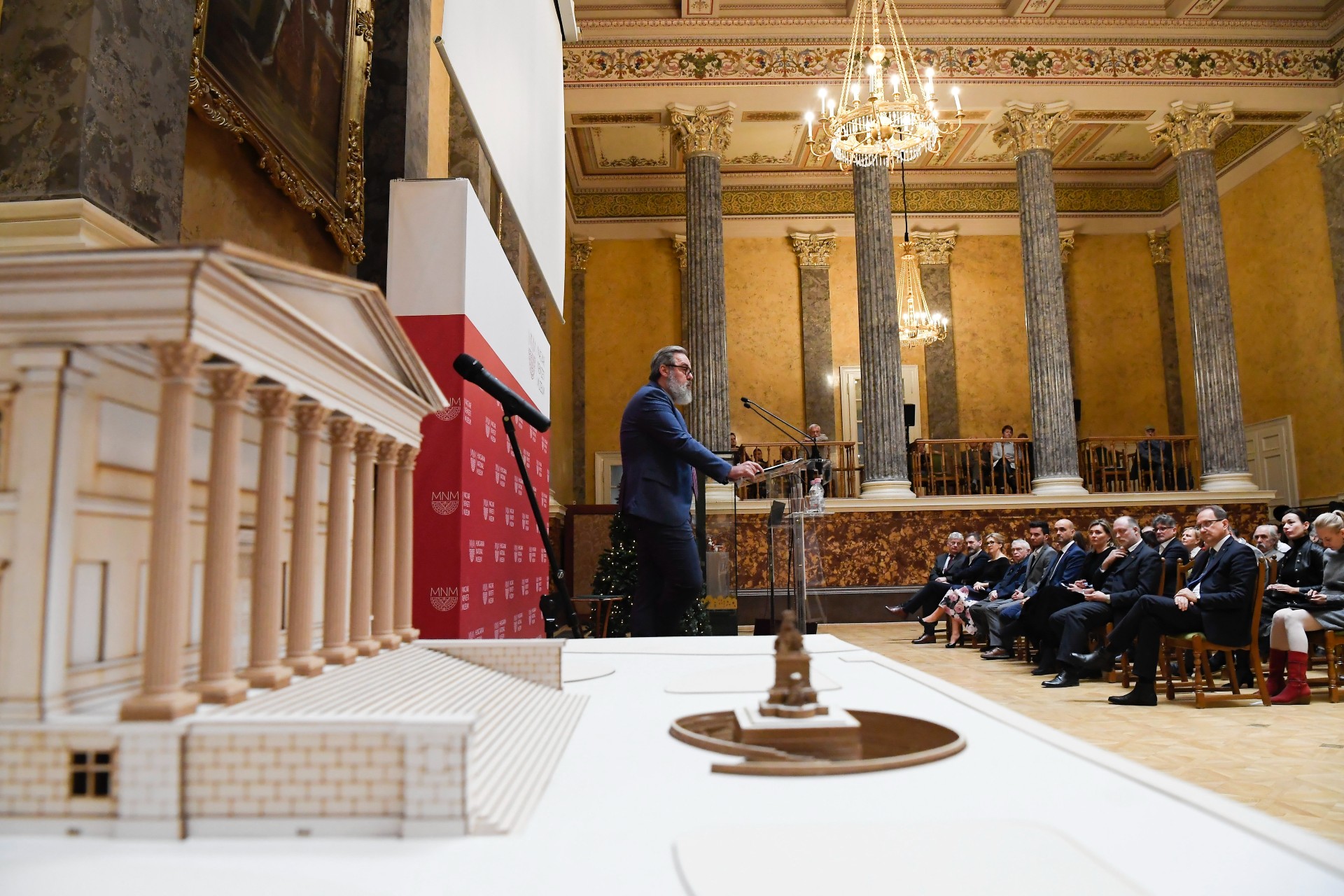
László L. Simon, the Director General of the Hungarian National Museum, gives a greeting at the conference organised on the occasion of the 220th anniversary of the foundation of the Hungarian National Museum in the hall of the museum (Photo: MTI/Tamás Kovács)
László L. Simon, the Director General of HNM, recalled that in the last 100 years of the institution he led, the work of almost all his predecessors was made difficult by the tight budget framework. As he added, after his appointment, additional state support and greater government attention gave the National Museum a significant boost, but the war that broke out next door and its indirect effects deflated the additional resources relatively quickly.
All this does not mean that HNM does not want to realise its plans in the short or long term, such as a new archaeology centre, restoration base and artefact warehouse, accessibility of the main building, a national portrait repository to be created in a new building or a new permanent exhibition, he noted. László L. Simon highlighted the importance of public education, public relations and museum pedagogy, however, he named high-quality scientific activity as the basis of the museum's activities.
"Our institution has an emphatically national character, something that a biological or physical research institute cannot have, nor even a fine arts museum," said the Director General. He recalled that the nation's museum has been transformed several times in the past 220 years, this institution with a fundamentally historical profile was created as a result of fortunate and less successful decentralisation steps, which is a defining scientific workshop and popular exhibition space in Central Europe.
This process is irreversible, but in the future collection expansion policy, there should be an emphasis on replacing the fine and applied arts artefacts that were previously removed from the institution, he suggested. According to the Director General, the network of research institutes has undergone a significant transformation in the last decade. "The sustainability of some of them, given the current war situation, is highly doubtful," he warned, raising the possibility of integrating some institutes with a historical or archaeological profile into HNM.
László L. Simon emphasised: the National Museum must strive for responsible management and the creation of a stable financial background, maintaining good relations with the operating management and the current government. However, he added: in order to create financial stability, they are asking the operator to change the ticket price regulation, which preserves the spirit of socialism, by removing the overly broad system of discounts. However, the revival of private patronage is at least as important, since even the now strengthened actors of economic life have a responsibility towards the country, said László L. Simon.
The 220-year-old National Museum as a house of Hungarian memory was already more than a museum when it was founded, and it is more today. This institution has been one of the strongholds of the spiritual national defence of Hungarians for more than two centuries, and it must remain so - stressed the Speaker of the National Assembly, László Kövér during the break of the conference at the ceremonial handover of the reliefs commemorating the three former directors of the institution, László Fejérpataky, Bálint Hóman and István Zichy. He said that the museum must continue to fulfil its founding mission in order to remain a modern fortress of the nation's spiritual national defence with the scope of the Carpathian Basin.
"All this is in line with the times, in a professional and efficient manner. For all this, the responsible national policy must not only wish the management of the National Museum much success but also provide the institution with the financial means necessary to achieve the set goal. No matter how difficult budgetary times greet us, we must protect our intellectual strengths, they must not fall into foreign hands," said the Speaker.
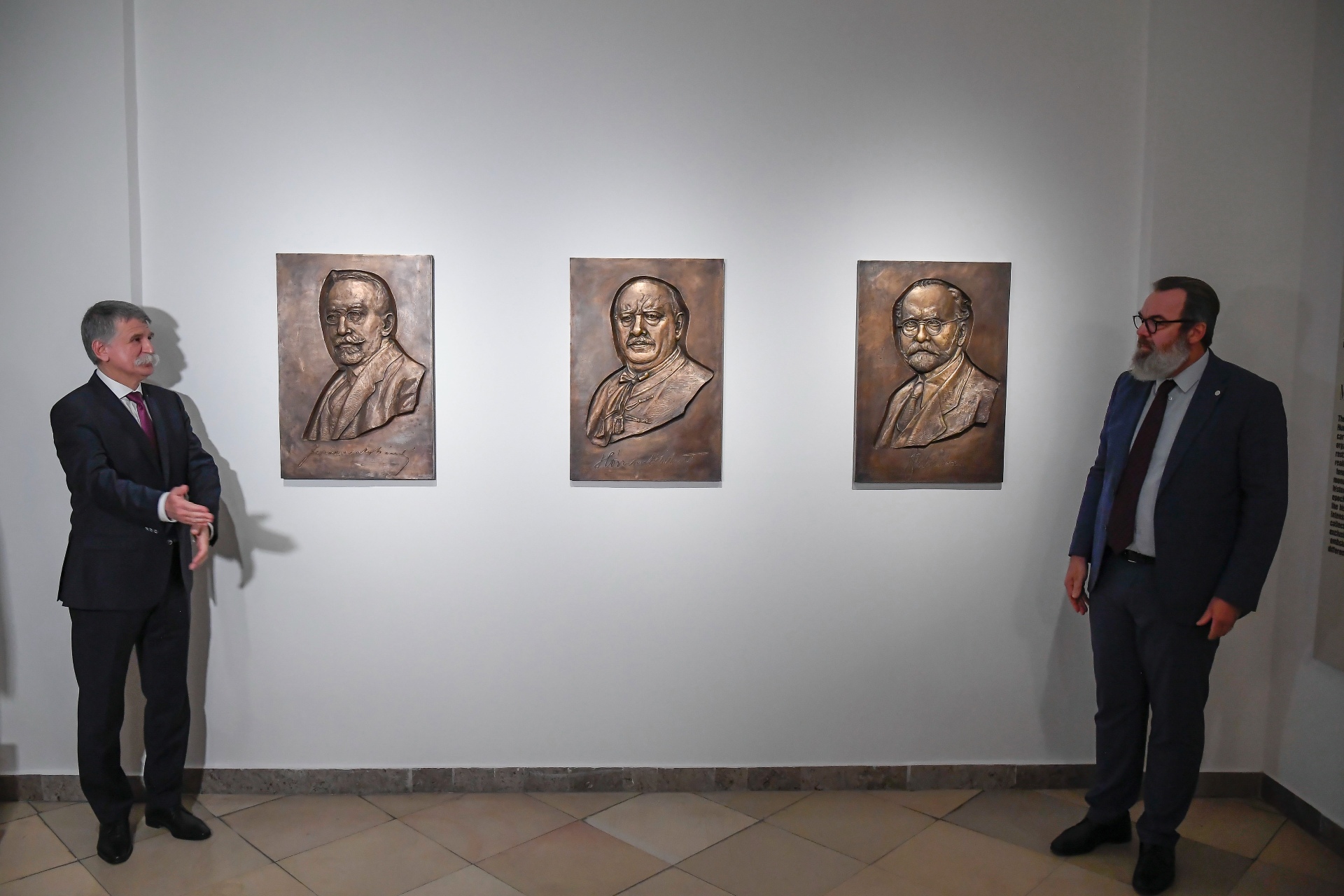
In the framework of the conference organised on the occasion of the 220th anniversary of the foundation of the Hungarian National Museum, László Kövér, the Speaker of the National Assembly and László L. Simon, the Director General of the Hungarian National Museum inaugurate the bronze reliefs depicting the three former directors of the institution, László Fejérpataky, Bálint Hóman and István Zichy, in the basement of the museum, in the lobby next to the Pulszky Hall, on 8 December 2022 (Photo: MTI/Tamás Kovács)
As he pointed out, as a result of the development of information technology, the control over remembrance and the identity that underpins it has now become the most effective tool of power politics, how a group of people, through the knowledge industry, which is owned by them or is under their influence - i.e., education, culture and media - enforce their own will, to have their interests and values accepted at the world level, to impose them on their fellow human beings.
Without remembrance there is no community, without community there is no public will, without public will there is no public power, without public power there is no democracy, only the rule of arbitrary private powers, he pointed out.
According to László Kövér, only self-aware communities can oppose private powers, and family, religious or national communities have the best chance of doing so. The Speaker added that this is the explanation for the fact that everywhere in the Western world, human remembrance and the communities with the strongest remembrance are under siege, which is why it is necessary for the National Museum to remain one of the strongholds of the spiritual national defence of Hungarians in the next two hundred years.
As he recalled, one of the "first heartbeats" heralding the arrival of the Hungarian reform era was the founding of the National Museum. It is not a coincidence, but a matter of fate that in March 1848 the yard of the National Museum became the main square of the nation, that the upper house of the first representative Hungarian parliament freed from foreign public law rule met in the building of the National Museum, he pointed out.
"In the past more than two centuries, the National Museum has only lived as long as free Hungary has lived. If the country and the nation rose, the museum rose and grew, if the homeland suffered, the house of Hungarian memory, i.e., the Hungarian National Museum, also languished," he said.
According to the Speaker of the House, the three outstanding Director Generals, whose memory will now be honoured with reliefs, were at the head of the institution in the period between 1916 and 1944, so during World War I, the Bolshevik reign of terror, the Romanian occupation, Trianon, and the Great Depression between 1929 and 1933, in the midst of World War II, the German and then the Soviet occupation, they shouldered the main responsibility for the National Museum.
"Director-General László L. Simon is therefore a lucky man, as he has plenty to draw spiritual strength from for the future," said László Kövér.
László L. Simon, the Director General of the Hungarian National Museum, said: The portraits of László Fejérpataky, Bálint Hóman and István Zichy were cast in bronze by sculptor Imre Elek, who also played a significant role in the revival of Kossuth Square; the reliefs can be seen in the lobby next to the Pulszky Hall from Thursday.
Source: MTI
Cover photo: Bronze reliefs depicting the three former directors of the Hungarian National Museum, László Fejérpataky, Bálint Hóman and István Zichy (Photo: MTI/Tamás Kovács)



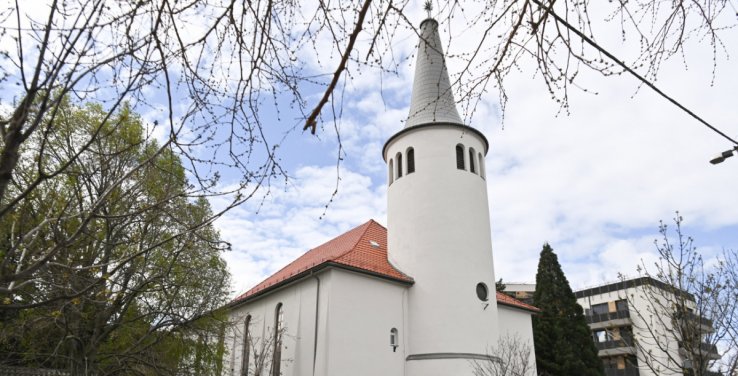
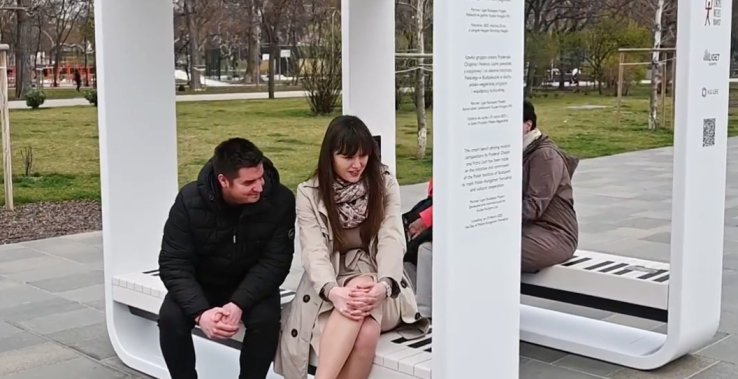

































Hozzászólások
Log in or register to comment!
Login Registration